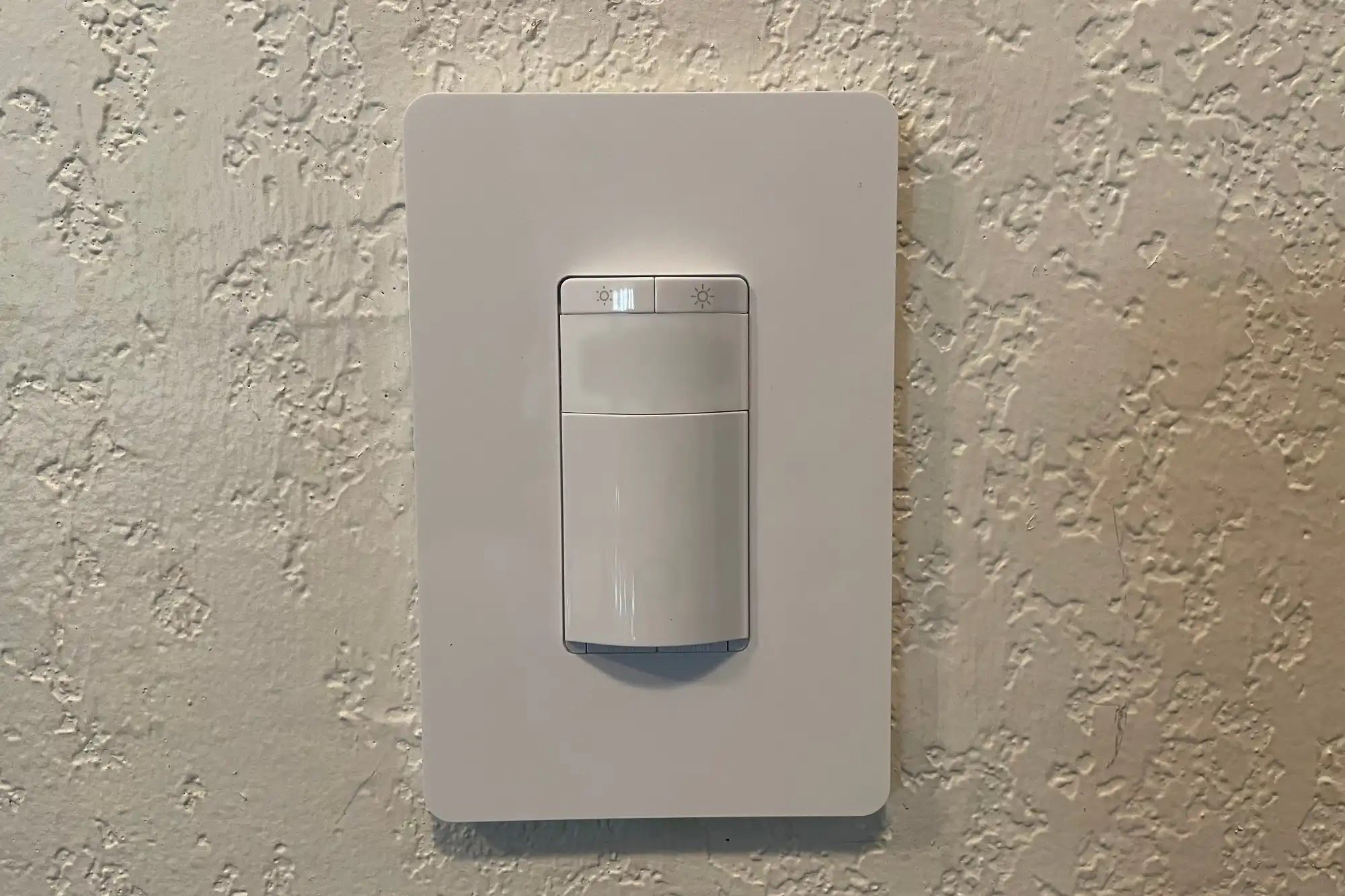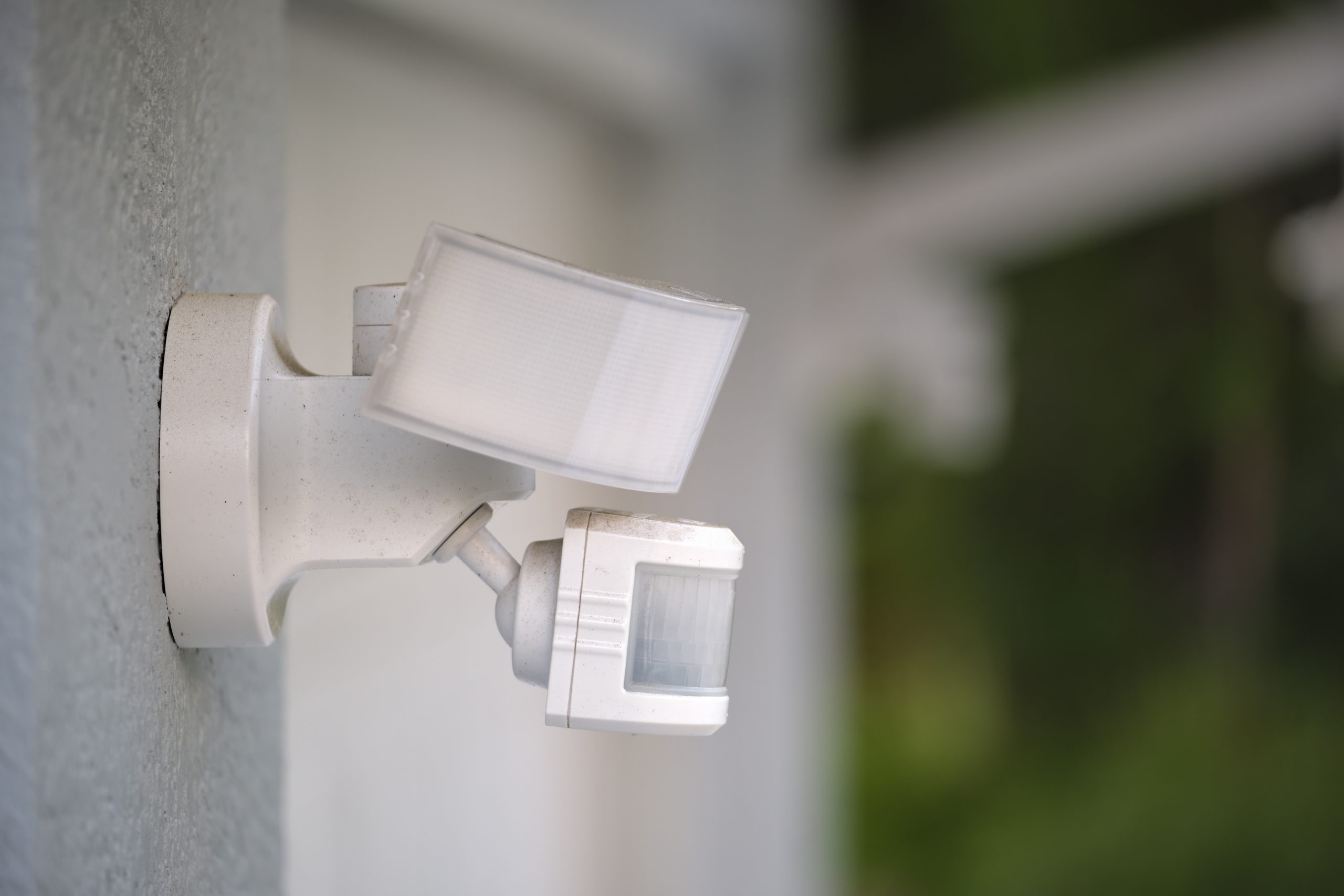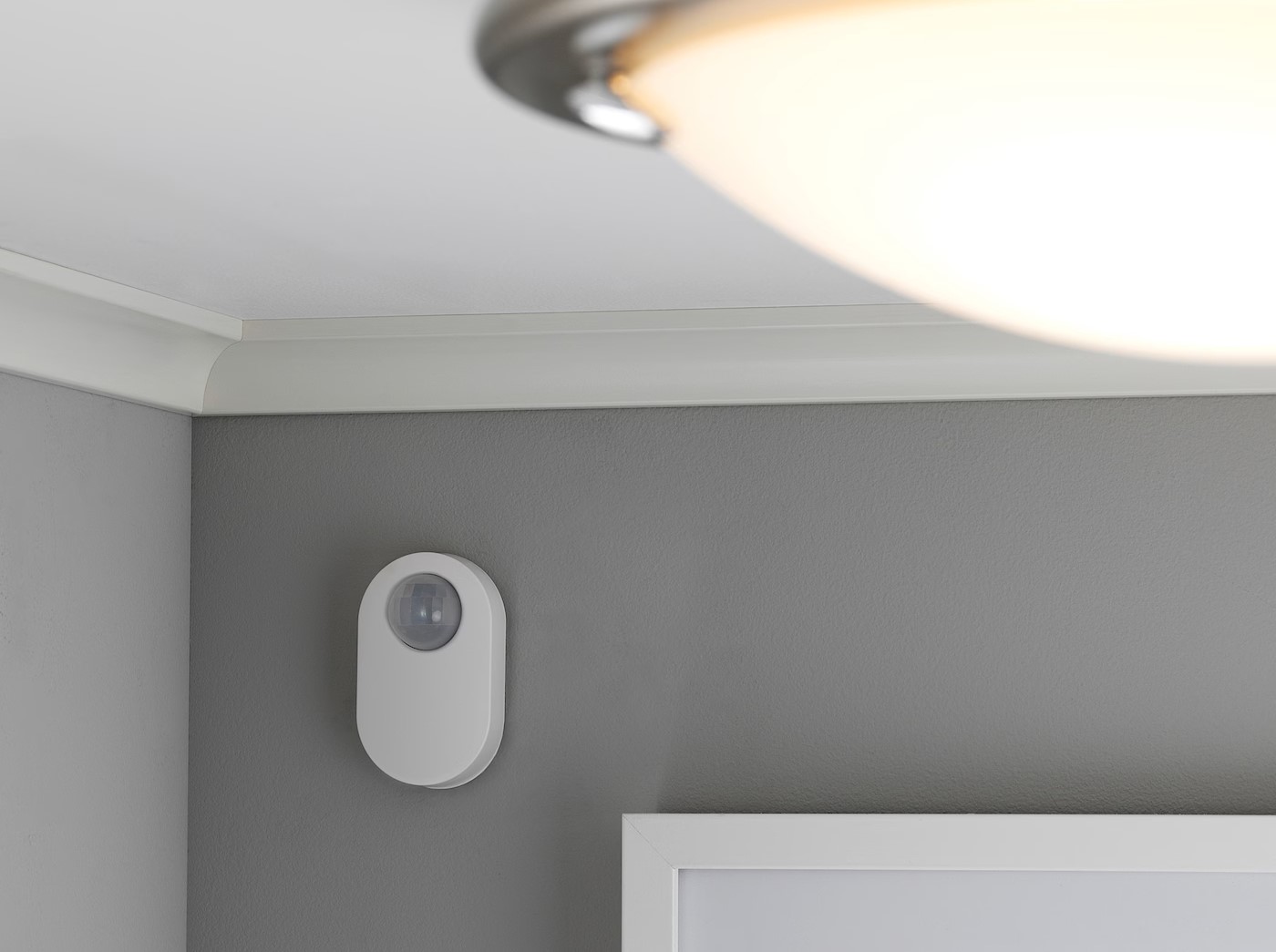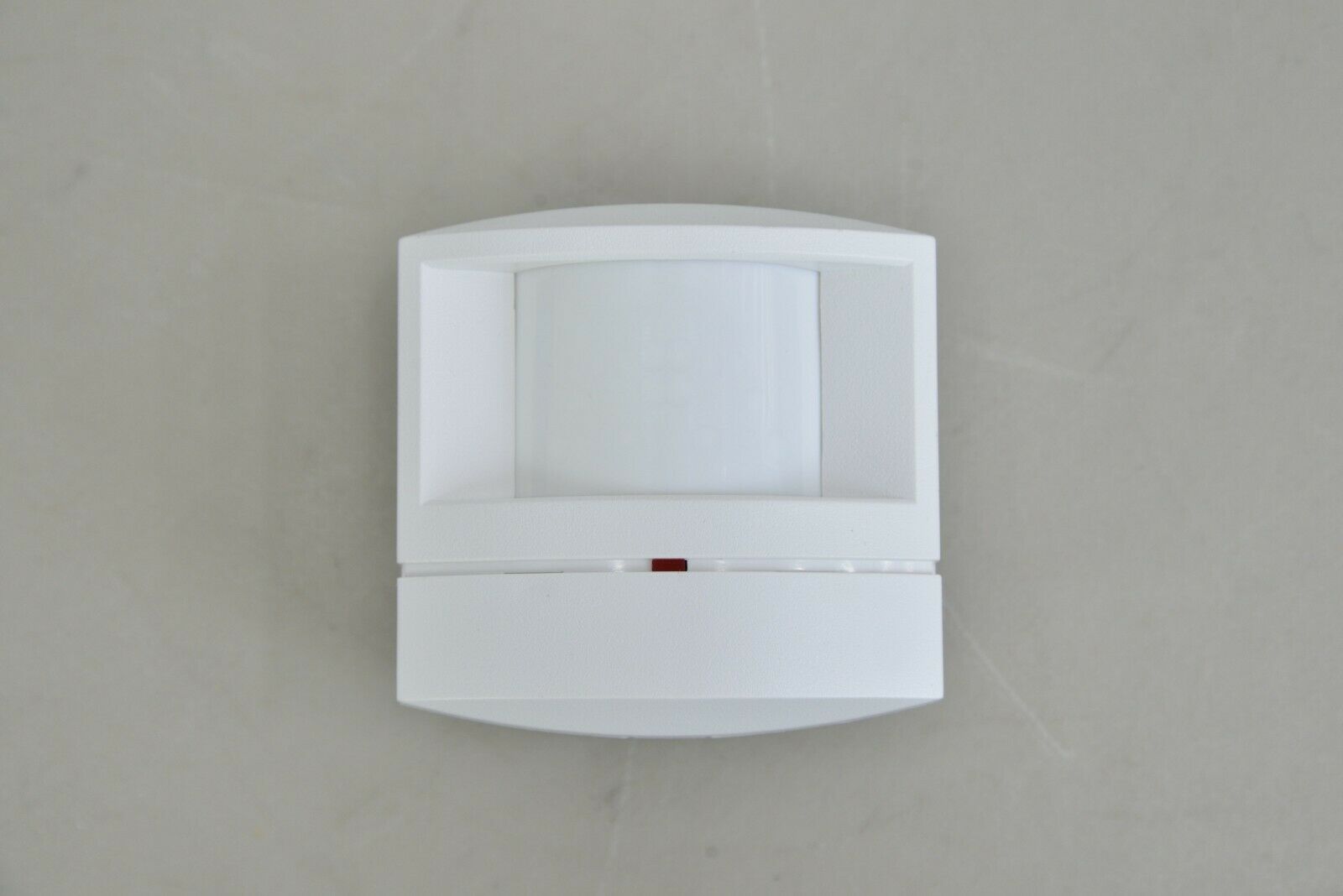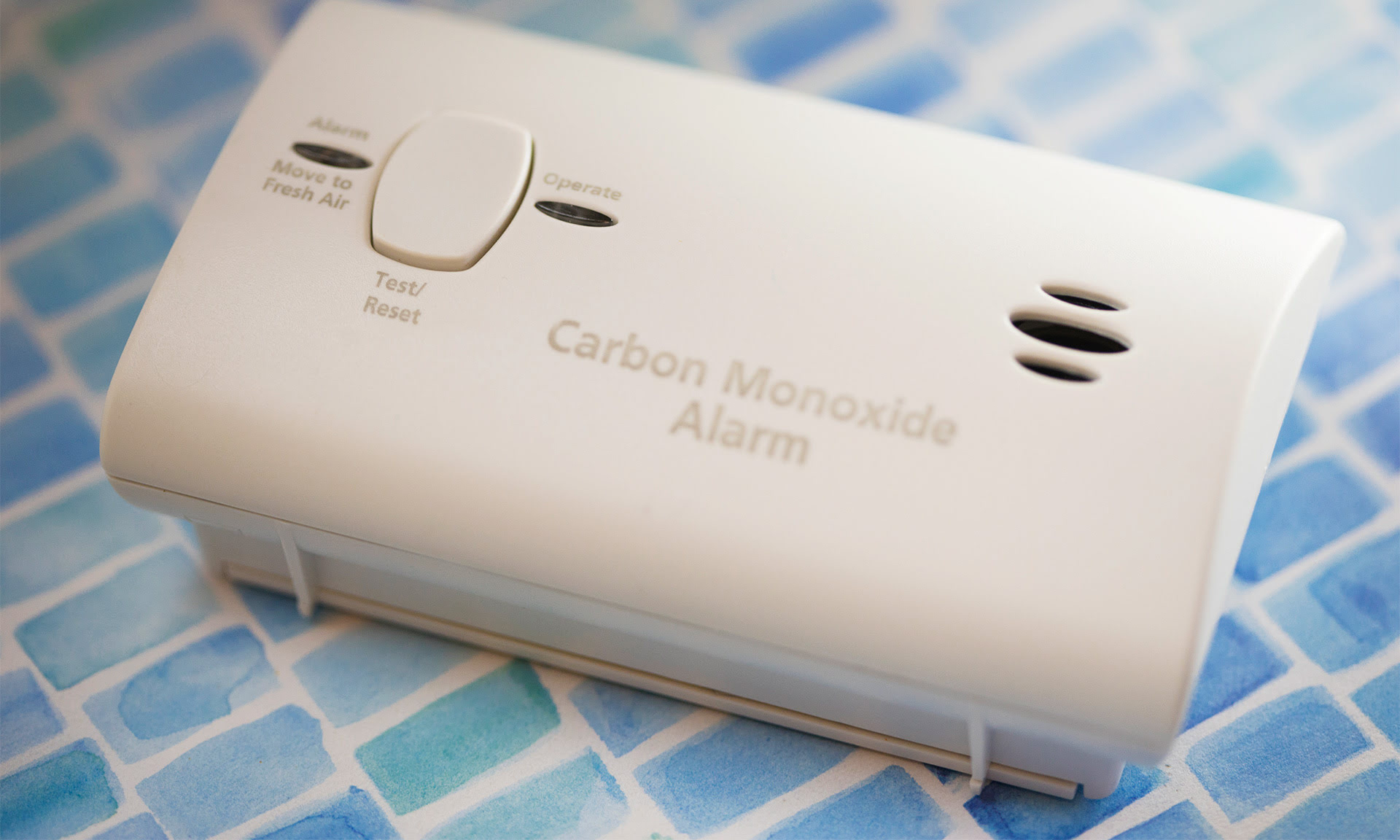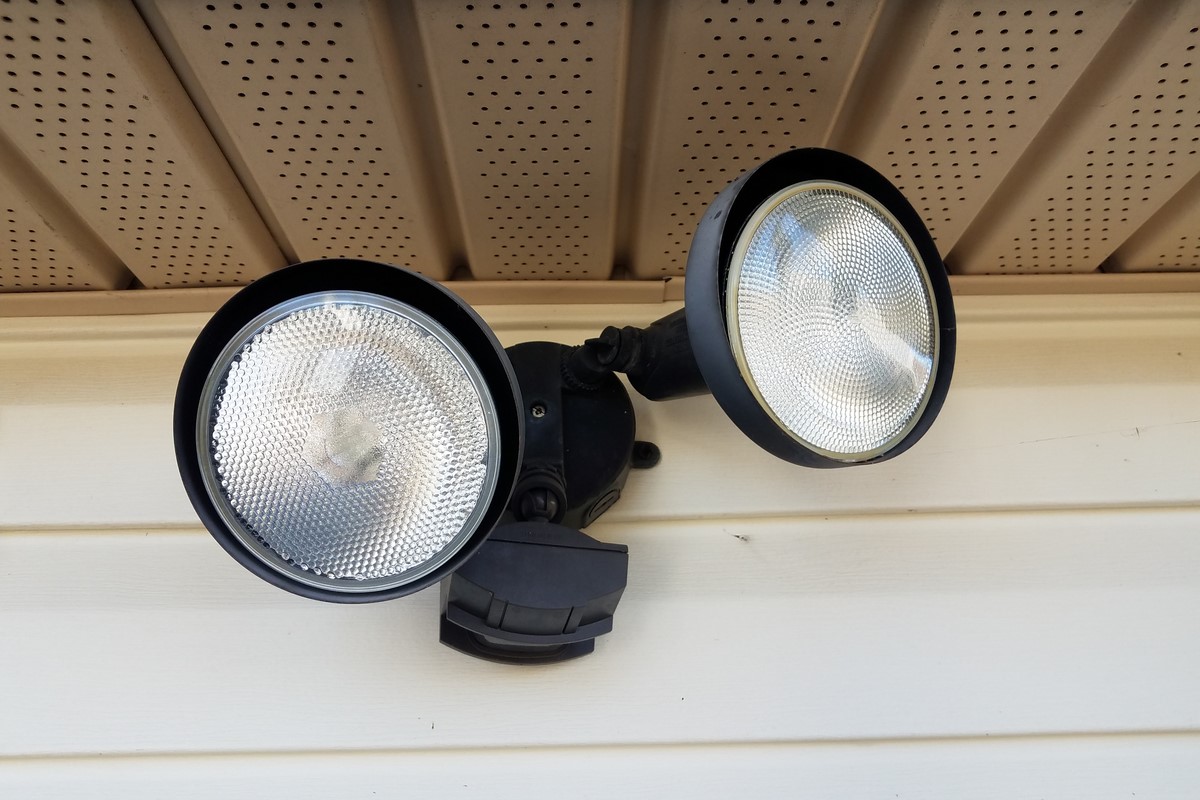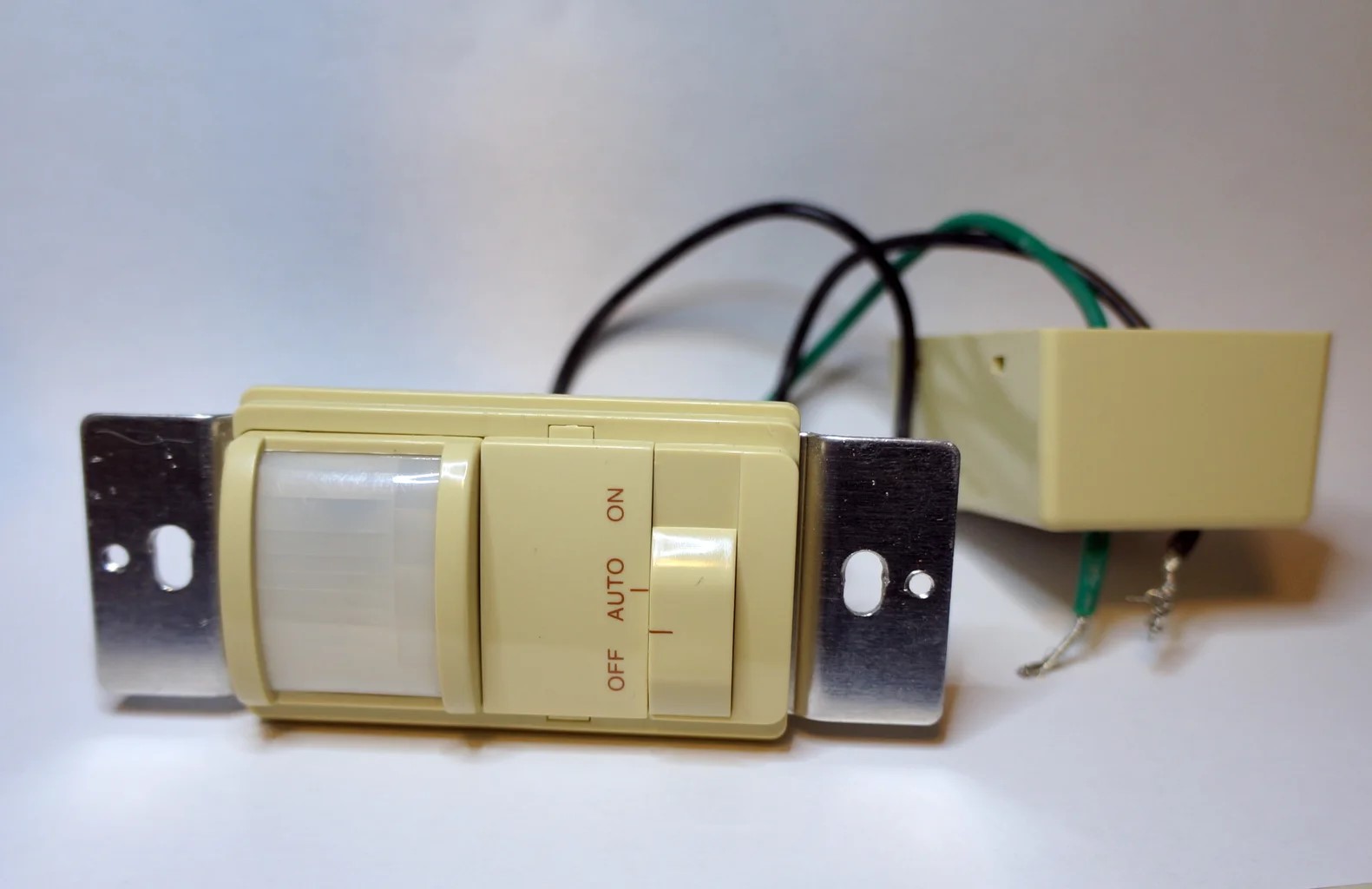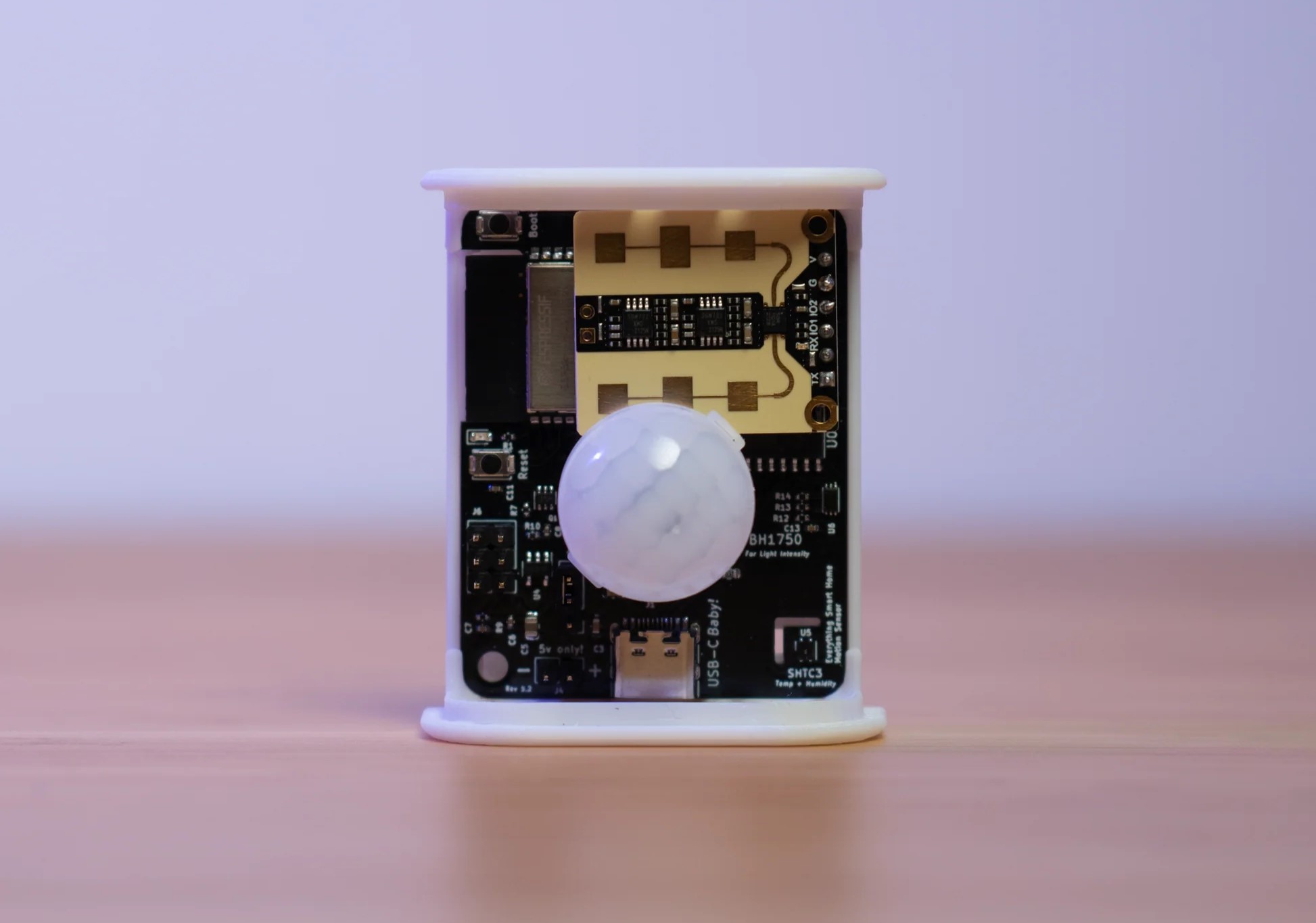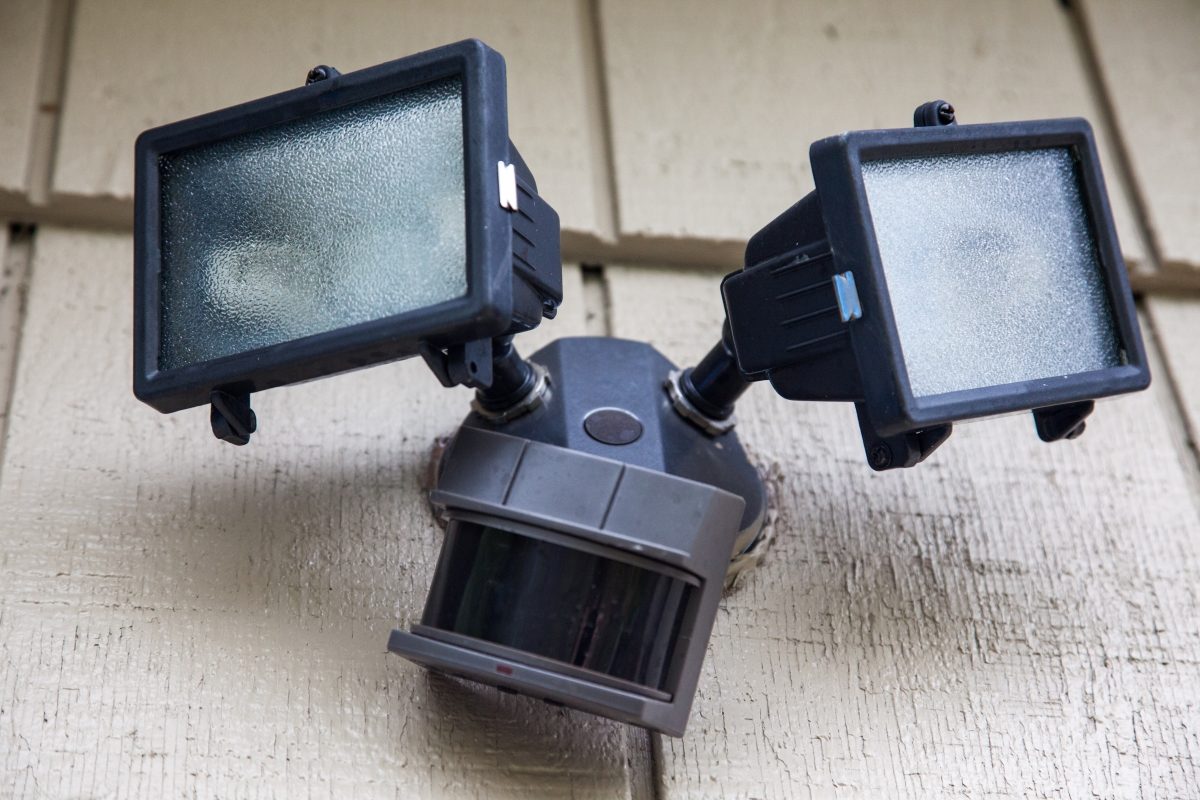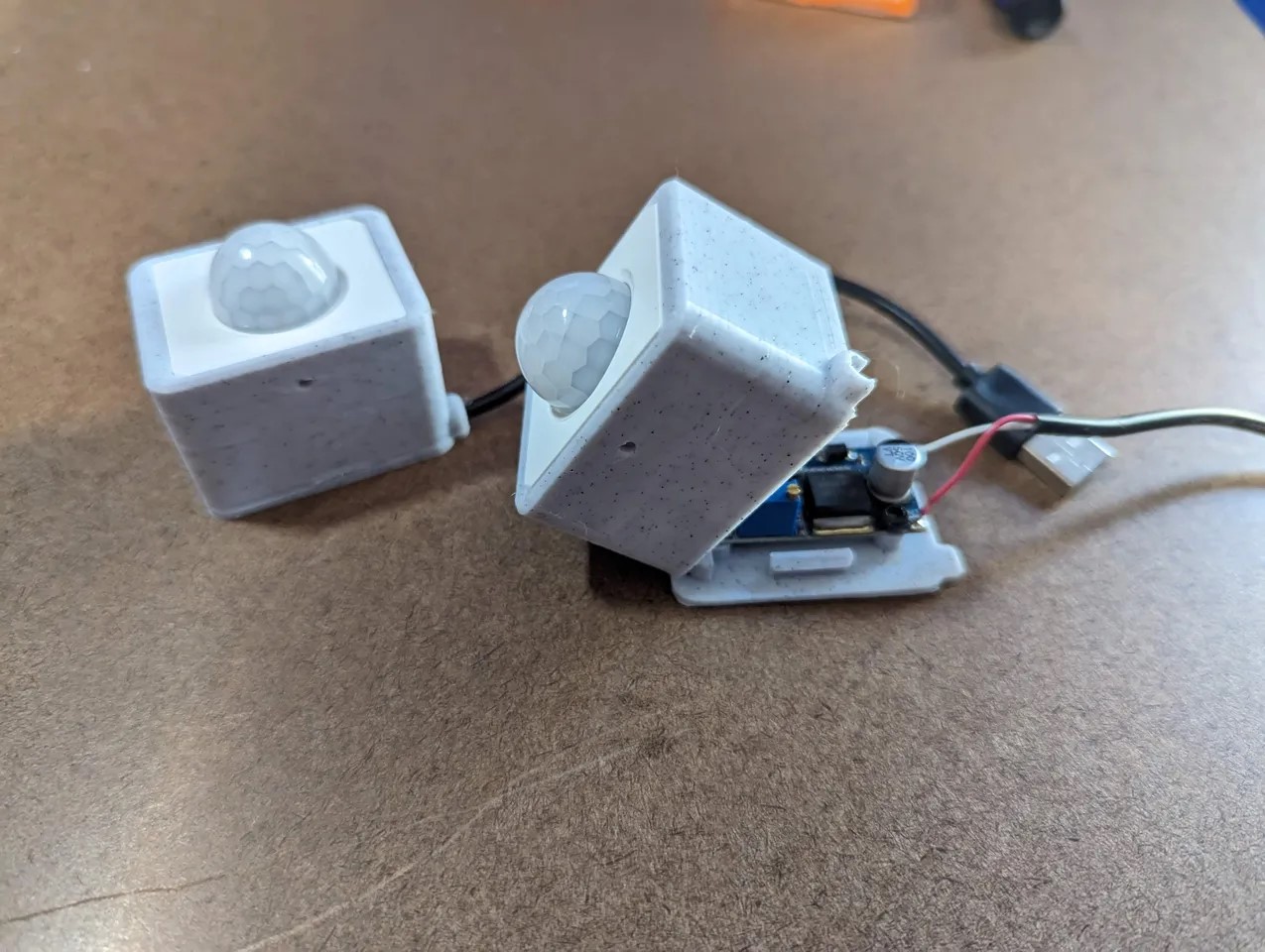Home>Home Security and Surveillance>How Does Motion Detector Work
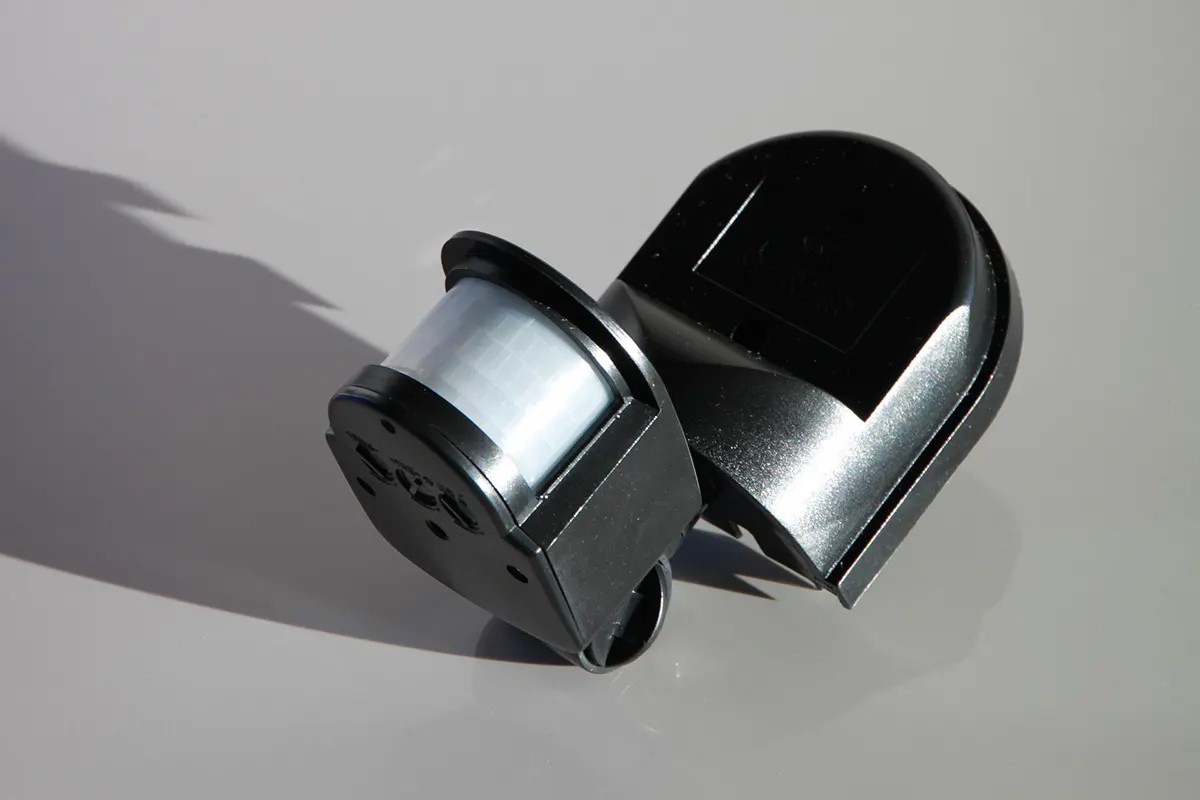

Home Security and Surveillance
How Does Motion Detector Work
Modified: August 27, 2024
Discover how motion detectors work and their importance in home security and surveillance to keep your property safe.
(Many of the links in this article redirect to a specific reviewed product. Your purchase of these products through affiliate links helps to generate commission for Storables.com, at no extra cost. Learn more)
Introduction
Welcome to the world of home security and surveillance, where advancements in technology have made it easier than ever for homeowners to protect their property and loved ones. One essential component of a robust security system is the motion detector – a device that can detect movement and trigger an alarm or alert. In this article, we will explore the fascinating world of motion detectors, their various types, how they work, and their practical applications.
Picture this: you’re peacefully sleeping in your bed when suddenly, you hear a noise downstairs. Your heart races as you wonder if there’s an intruder in your home. Enter the motion detector – a silent guardian that can detect any suspicious movement and alert you in real-time. Motion detectors are not only used for security purposes but also for automation and energy-saving applications.
Before delving into the intricacies of motion detectors, let’s take a moment to understand their role in home security. In simple terms, a motion detector is a device that senses motion within its range and triggers a response. This response can be an audible alarm, a text notification to a smartphone, or even the activation of security cameras to start recording.
Motion detectors play a crucial role in a comprehensive home security system. Traditional security systems relied on sensors placed on doors and windows, but these can easily be bypassed by an intruder. Motion detectors, on the other hand, actively monitor the environment, giving homeowners an added layer of protection.
Over the years, motion detectors have evolved and have become more sophisticated, thanks to advancements in technology. Today, there are several types of motion detectors available, each with its own unique mechanism for detecting motion. Let’s explore some of the most common types of motion detectors in the next section.
Key Takeaways:
- Motion detectors are devices that detect movement and trigger alarms or alerts. They come in different types, such as passive infrared, microwave, ultrasonic, and dual technology detectors, each with its own unique way of detecting motion.
- Motion detectors have applications beyond security, including energy efficiency, home automation, outdoor lighting, occupancy monitoring, healthcare, and retail analytics. They play a vital role in enhancing safety, convenience, and efficiency in various settings.
Read more: How Does The Motion Detector Work On Ring 2
Overview of Motion Detectors
Motion detectors are essential devices that detect movement within a designated area. They are commonly used in home security systems, commercial spaces, and outdoor surveillance systems. By detecting motion, these devices can trigger an alarm, activate lights, or initiate video recording.
There are various types of motion detectors available, each utilizing different technologies to detect motion. These include passive infrared (PIR) motion detectors, microwave motion detectors, ultrasonic motion detectors, and dual technology motion detectors.
Passive Infrared (PIR) motion detectors are the most commonly used type of motion detector. They work by detecting changes in heat in the area they monitor. PIR detectors have a sensor that can detect infrared energy emitted by humans and animals. When the sensor detects a significant change in infrared energy, it triggers an alarm. PIR motion detectors are ideal for indoor use and are effective in detecting human movement.
Microwave motion detectors operate by emitting microwave signals into the monitored area and measuring the reflection of those signals. When an object moves within the area, the microwave signal is disrupted, triggering an alarm. Microwave detectors are versatile and can detect motion through walls and other objects, making them suitable for outdoor use.
Ultrasonic motion detectors use sound waves to detect motion. They emit ultrasonic sound waves and analyze the changes in the reflected sound when objects move within the monitored area. These detectors are especially effective in detecting motion in enclosed spaces and are commonly used in areas where there may be obstructions or obstacles that could interfere with other types of motion detectors.
Dual technology motion detectors combine two or more technologies, such as PIR and microwave, to provide more accurate and reliable motion detection. These detectors require both technologies to activate simultaneously before triggering an alarm. Dual technology detectors are known for their high level of accuracy and are commonly used in high-security areas where false alarms need to be minimized.
When selecting a motion detector for your specific needs, consider factors such as the size and layout of the area you want to monitor, the level of security required, and potential sources of false alarms. It is important to choose the right type of motion detector that suits your specific needs to ensure reliable and accurate detection.
In the next section, we will dive deeper into how each type of motion detector works to detect motion in different environments.
Types of Motion Detectors
Motion detectors come in various types, each utilizing different technologies to detect and respond to movement. Understanding the different types can help you choose the right motion detector for your specific security needs. Let’s take a closer look at the most common types of motion detectors:
1. Passive Infrared (PIR) Motion Detectors: PIR motion detectors are the most widely used type. They detect changes in infrared energy emitted by living beings. The sensor within the detector detects the heat signatures of humans and animals, and when it detects a change, it triggers an alarm. PIR detectors are ideal for indoor use and are commonly found in homes and offices.
2. Microwave Motion Detectors: Microwave motion detectors emit microwave signals and measure the reflection of those signals. When an object moves within the monitored area, it disrupts the microwave signal, triggering an alarm. These detectors are highly sensitive and can detect motion through walls and other barriers. They are commonly used in outdoor spaces and high-security areas.
3. Ultrasonic Motion Detectors: Ultrasonic motion detectors emit high-frequency sound waves and detect changes in the reflected sound waves. When an object moves within the monitored area, it alters the frequency of the reflected sound waves, triggering an alarm. Ultrasonic detectors are commonly used in indoor environments with obstructions or obstacles that could interfere with other types of motion detectors.
4. Dual Technology Motion Detectors: Dual technology motion detectors combine two or more technologies, such as PIR and microwave, to provide more accurate and reliable motion detection. These detectors require both technologies to activate simultaneously before triggering an alarm. Dual technology detectors are known for their high level of accuracy and are commonly used in areas where false alarms need to be minimized.
Each type of motion detector has its own advantages and limitations, and selecting the right one depends on factors such as the environment to be monitored, the level of sensitivity required, and the potential sources of false alarms.
It is essential to carefully evaluate your specific security needs and consult with a professional to determine the most suitable type of motion detector for your home or business. In the next section, we will delve into how motion detectors work and the components that make them function effectively.
Passive Infrared (PIR) Motion Detectors
Passive Infrared (PIR) motion detectors are the most commonly used type of motion detectors and are widely found in residential and commercial settings. These detectors work by sensing changes in infrared energy emitted by living beings, such as humans and animals, within the monitored area.
PIR motion detectors consist of several components, including a sensor, a lens, and a circuit board. The sensor is designed to detect infrared energy, which is a type of electromagnetic radiation emitted by all objects with a temperature above absolute zero. The lens helps to focus the infrared energy onto the sensor, enhancing the detector’s sensitivity to detect even subtle changes in heat signatures.
When a person or animal moves within the field of view of a PIR motion detector, the sensor detects the change in the infrared energy pattern. This change indicates the presence of a moving object within the monitored area. The detector’s circuit board analyzes the signal from the sensor and triggers an alarm or activates other connected devices, such as security cameras or lights, to respond to the detected motion.
PIR motion detectors are ideally suited for indoor use as they effectively detect human and animal movement. They are commonly installed in entryways, hallways, and rooms where motion detection is required. These detectors are highly reliable, cost-effective, and easy to install.
However, PIR motion detectors do have some limitations. They are sensitive to changes in temperature, which means they can be triggered by sudden temperature fluctuations, such as a gust of wind through an open window or a heating or cooling system turning on or off. To minimize false alarms, advanced PIR motion detectors incorporate algorithms and filters to distinguish between human movement and other temperature-related changes.
Additionally, PIR motion detectors have a limited detection range. The range depends on the specific model but typically extends up to around 30 feet. Therefore, multiple motion detectors may be needed to cover larger areas.
Overall, PIR motion detectors are a popular choice for home and business security systems due to their reliability and affordability. They offer an effective means of detecting human and animal movement, enhancing the overall security and safety of the premises.
In the next section, we will explore another popular type of motion detector: microwave motion detectors.
Microwave Motion Detectors
Microwave motion detectors are a type of motion detection technology that utilizes microwave signals to detect and respond to movement. These detectors emit continuous microwave signals and analyze the reflected signals to detect any changes caused by moving objects within the monitored area.
Microwave motion detectors consist of a transmitter and a receiver. The transmitter emits microwave signals, typically in the range of 10-24 GHz, into the monitored area. The receiver, positioned opposite the transmitter, picks up the reflected signals. When there is no movement within the detection zone, the received signal remains unchanged. However, if an object moves within the monitored area, it disrupts the microwave signal, leading to a change in the received signal pattern.
The detector’s circuitry continuously analyzes the received signal pattern to determine if there is any movement. If movement is detected, the detector triggers an alarm or activates other connected security devices, such as cameras or lights, to respond to the detected motion.
One of the main advantages of microwave motion detectors is their ability to detect motion through walls, windows, and other obstacles. This makes them suitable for outdoor use, as they can cover large areas and provide comprehensive security coverage. Additionally, microwave detectors can detect movement in various weather conditions, including rain, fog, and snow, making them highly reliable in different environments.
However, microwave motion detectors do have some limitations to consider. They have a higher potential for false alarms compared to other motion detection technologies. This is because microwave signals can be influenced by environmental factors, such as moving foliage, small animals, or even random vibrations. To mitigate these false alarms, advanced microwave detectors use sophisticated algorithms and filters to differentiate between legitimate movement and other environmental disturbances.
Furthermore, microwave motion detectors require careful positioning and adjustment to ensure proper coverage and to avoid interference. Improper placement can result in blind spots or overlapping detection zones, impacting their effectiveness.
Despite these limitations, microwave motion detectors are an excellent choice for outdoor security applications, such as perimeter protection, parking lots, and large open areas. Their ability to detect movement through various obstacles and in adverse weather conditions makes them a reliable option for comprehensive surveillance.
Next, we will uncover another type of motion detection technology: ultrasonic motion detectors.
Ultrasonic Motion Detectors
Ultrasonic motion detectors are a type of motion detection technology that uses sound waves to detect movement within a monitored area. These detectors emit high-frequency sound waves, typically in the ultrasonic range above the limits of human hearing, and analyze the changes in the reflected sound waves to determine if there is any movement.
Ultrasonic motion detectors consist of a transmitter and a receiver. The transmitter emits ultrasonic waves into the monitored area, and the receiver picks up the reflected waves. When there is no movement within the detection zone, the received sound waves remain at a steady frequency and amplitude. However, if an object moves within the monitored area, it disrupts the reflected sound waves, resulting in changes in frequency and amplitude.
The detector’s circuitry analyzes these changes in the received sound waves to determine if there is any movement. If movement is detected, the detector triggers an alarm or activates other connected security devices, such as cameras or lights, to respond to the detected motion.
Ultrasonic motion detectors are particularly useful in environments where there may be obstructions or obstacles that could interfere with other types of motion detectors. For example, they are commonly used in indoor spaces with partitions, furniture, or objects that could block the line of sight of other detectors. Ultrasonic detectors can detect motion even if it occurs behind or around these obstacles, providing comprehensive coverage.
However, there are some considerations with ultrasonic motion detectors. They can be sensitive to air currents, such as drafts or ventilation systems, and may require proper positioning to minimize false positives. Additionally, ultrasonic waves do not penetrate solid objects well, so they may have limited effectiveness in detecting movement through walls or other dense materials.
Ultrasonic motion detectors are commonly used in indoor environments, where they provide reliable motion detection. They are often found in offices, homes, and warehouses, offering an additional layer of security and ensuring the prompt detection of any unauthorized movement.
In the next section, we will explore dual technology motion detectors, which combine multiple technologies for enhanced accuracy and reliability.
Dual Technology Motion Detectors
Dual technology motion detectors combine two or more motion detection technologies to provide enhanced accuracy and reliability in detecting movement. By integrating multiple technologies, these detectors minimize the potential for false alarms and increase the overall effectiveness of motion detection in various environments.
Commonly, dual technology motion detectors combine passive infrared (PIR) and microwave technologies. These detectors require both technologies to activate simultaneously before triggering an alarm. This dual activation ensures that legitimate motion is detected, while reducing false alarms caused by environmental factors or random interferences.
The combination of PIR and microwave technology in dual technology detectors offers significant advantages. The PIR component is effective in detecting human body heat, providing accurate detection of people within the monitored area. At the same time, the microwave component offers the ability to detect movement through walls and other obstacles, providing comprehensive coverage.
When using dual technology motion detectors, both technologies must detect movement within a certain time window, typically within a few milliseconds of each other, to trigger an alarm. This stringent requirement helps to reduce false alarms caused by individual technology anomalies or environmental effects.
Dual technology motion detectors are commonly used in high-security areas, such as banks, government buildings, and jewelry stores, where reliable and accurate motion detection is vital. These detectors offer a higher level of confidence and reduce the likelihood of false alarms, ensuring that security personnel can respond appropriately to any detected motion.
It’s important to note that dual technology motion detectors require careful installation and configuration. Positioning and adjusting both the PIR and microwave components properly is crucial to ensure optimal performance. An expert installer should be consulted to determine the best locations and settings for these detectors.
In summary, dual technology motion detectors provide a robust solution for accurate and reliable motion detection. By combining multiple technologies, these detectors offer an increased level of security and minimize the potential for false alarms, making them an excellent choice for high-security applications.
Now that we have explored the different types of motion detectors and their functionalities, let’s dive into how motion detectors work and the key components that make them function effectively.
Motion detectors work by sensing changes in infrared radiation or sound waves. When an object moves within the detector’s range, it triggers an alarm or activates a light.
How Motion Detectors Work
Motion detectors are designed to detect movement within a designated area, triggering an alarm or activating other devices in response to the detected motion. Understanding how motion detectors work can help us appreciate their capabilities and know how to maximize their effectiveness.
At a basic level, motion detectors work by detecting changes in the environment, such as changes in heat, sound waves, or reflected signals. Different types of motion detectors utilize different technologies to achieve this. Let’s explore the general working principle of motion detectors:
1. Sensing the Environment: Motion detectors are designed to sense changes in specific environmental factors that are indicative of movement. For example, a passive infrared (PIR) motion detector senses changes in infrared energy, while a microwave motion detector detects disruptions in microwave signals. Ultrasonic motion detectors analyze changes in reflected sound waves, and dual technology detectors require simultaneous activation of multiple detection technologies.
2. Triggering a Response: When a motion detector senses a change that exceeds a certain threshold, it triggers a response. This response can vary depending on the specific application and the design of the security system. Common responses include sounding an audible alarm, activating lights, sending notifications to a smartphone or security monitoring center, or even starting video recording with connected security cameras.
3. Minimizing False Alarms: One of the challenges with motion detectors is minimizing false alarms caused by environmental disturbances or noise. To address this, manufacturers incorporate various techniques and algorithms to differentiate between actual movement and false triggers. These include adjusting sensitivity levels, using digital signal processing to analyze detection patterns, and implementing sophisticated filtering algorithms to distinguish between legitimate motion and environmental fluctuations.
4. Detection Range and Sensitivity: Motion detectors have different detection ranges and sensitivity settings. The detection range determines the area covered by the motion detector, while sensitivity settings allow users to adjust the level of motion required to trigger an alarm. It is important to consider the specific needs of the area being monitored and adjust these settings accordingly to ensure comprehensive coverage and minimize false alarms.
5. Power Source: Motion detectors typically operate on batteries or are connected to a power source. Battery-operated motion detectors offer flexibility and can be placed anywhere without the need for electrical wiring. However, regular battery maintenance is necessary to ensure reliable operation. Motion detectors connected to a power source have a constant power supply, eliminating the need for battery replacement.
Overall, motion detectors are an integral part of a comprehensive security system, providing an added layer of protection and peace of mind for homeowners and businesses alike. By understanding how motion detectors work and considering their specific features and limitations, users can make informed decisions in selecting and optimizing the performance of these essential security devices.
In the next section, we will explore the key components that make up a motion detector and contribute to its functionality.
Components of a Motion Detector
Motion detectors consist of several key components that work together to detect movement and initiate a response. These components are designed to ensure accurate and reliable motion detection. Let’s explore the essential components of a motion detector:
1. Sensor: The sensor is the core component of a motion detector. It detects changes in the environmental factors being monitored, such as heat, sound waves, or reflected signals. Different types of motion detectors utilize different sensors based on their detection technology. For example, a passive infrared (PIR) motion detector uses a sensor that detects infrared energy, while a microwave detector uses a sensor to measure changes in microwave signals.
2. Lens or Antenna: The lens or antenna is responsible for focusing the detected signals onto the sensor. In PIR detectors, the lens helps concentrate infrared energy onto the sensor, improving the detector’s sensitivity to heat changes. In microwave detectors, the antenna emits and receives microwave signals, facilitating the detection of movement through reflections.
3. Circuit Board: The circuit board is the brain of the motion detector. It analyzes the signals received from the sensor and makes decisions based on predetermined criteria. The circuit board determines the threshold for triggering an alarm, filters out noise and false signals, and controls the overall functionality of the detector.
4. Alarm or Output Device: The alarm or output device is activated when the motion detector senses movement above the predefined threshold. It can be an audible alarm, a flashing light, or a signal sent to a connected security system or monitoring center. The purpose of the alarm or output device is to alert inhabitants or authorities of potential intrusions or unauthorized activity.
5. Power Source: Motion detectors require a power source to operate. They can be battery-powered or connected to an electrical power supply. Battery-powered detectors offer flexibility in terms of placement and do not rely on external power sources. However, regular battery maintenance is essential to ensure uninterrupted operation. Motion detectors connected to an electrical power supply have a constant power source, eliminating the need for battery replacement.
6. Housing: The housing of a motion detector encloses and protects its internal components. The design of the housing may vary depending on the intended use and environment. Indoor motion detectors often have a compact and discreet design, while outdoor detectors have rugged casings that are resistant to water, dust, and other environmental elements.
These components work together harmoniously to detect movement accurately and reliably. When motion is detected, the sensor sends a signal to the circuit board, which processes the information and triggers the appropriate response, such as sounding an alarm or activating connected devices.
It’s important to note that while individual components are crucial, the overall performance of a motion detector relies on the integration and synergy of these components. Each component plays a vital role in ensuring effective motion detection and enhancing security in residential and commercial environments.
In the next section, we will discuss important considerations related to the detection range, sensitivity, and minimizing false alarms when using motion detectors.
Detection Range and Sensitivity
The detection range and sensitivity are important factors to consider when using motion detectors. These parameters determine the coverage area of the detector and its ability to detect even subtle motion. Let’s explore the significance of detection range and sensitivity in motion detection:
Detection Range: The detection range refers to the area within which the motion detector can sense movement. It is the maximum distance from the detector at which it can effectively detect motion. The detection range is determined by the specific design, technology, and configuration of the motion detector. Different models and types of motion detectors have varying detection ranges, typically ranging from a few meters to tens of meters.
The detection range is an essential consideration when installing motion detectors. It determines the coverage area and helps determine the number of detectors needed for comprehensive coverage. Factors such as the size and layout of the area, potential obstructions, and the level of security required should be taken into account when determining the placement and number of detectors.
Sensitivity: The sensitivity of a motion detector determines how easily it can detect motion. It refers to the minimum level of motion required to trigger an alarm or activate the detector’s response. High sensitivity means the detector can detect even subtle motion, while low sensitivity requires more pronounced movement to trigger a response. Sensitivity settings can be adjusted based on the specific requirements and environment in which the detector is installed.
The sensitivity of a motion detector should be set carefully to balance between detecting legitimate motion and minimizing false alarms. If the sensitivity is set too high, it may lead to frequent false alarms triggered by minor movements or environmental factors. On the other hand, if the sensitivity is set too low, the detector may not respond to actual movement, compromising the effectiveness of the security system.
It’s important to experiment and fine-tune the sensitivity settings of a motion detector during installation to find the optimal balance. Factors such as the environment, potential sources of interference or false triggers, and the specific security requirements should be taken into account when adjusting the sensitivity.
Considerations of the detection range and sensitivity of motion detectors are crucial for ensuring their effectiveness in detecting movement and enhancing security. By carefully assessing the coverage area and adjusting the sensitivity settings, users can optimize the performance of their motion detectors. In the next section, we will discuss strategies to minimize false alarms and maximize the reliability of motion detection systems.
False Alarms and Ways to Minimize Them
False alarms can be a major concern when using motion detectors. Unexpected triggering of alarms due to environmental factors or technical issues can diminish the reliability and effectiveness of a security system. However, there are several strategies and techniques that can help minimize false alarms and ensure the accurate detection of actual threats. Let’s explore some ways to reduce false alarms with motion detectors:
1. Sensitivity Adjustment: One of the first steps in reducing false alarms is to adjust the sensitivity of the motion detector. Fine-tuning the sensitivity settings can help strike a balance between detecting legitimate motion and disregarding false triggers. Experiment with different settings to find the optimal sensitivity level for the specific environment and security requirements.
2. Avoid Obstructions: Ensure that there are no obstructions, such as furniture, plants, or curtains, blocking the field of view of the motion detector. Obstructions can cause false alarms by triggering motion detection due to their own movements caused by air currents or other factors. Clear the monitored area from potential obstructions to minimize false triggers.
3. Proper Placement: Positioning the motion detector correctly is crucial to avoid false alarms. Consider the recommended mounting height and angle provided by the manufacturer. Avoid placing the detector too close to heat sources, air vents, or direct sunlight, as these can affect its performance and accuracy.
4. Specialized Zones: Some motion detectors offer the ability to create specialized detection zones. This allows users to designate specific areas within the monitored range where they want detection to be active. By excluding certain areas or objects, such as ceiling fans or windows, false alarms can be minimized without compromising overall security coverage.
5. Pet Immunity: If you have pets in your home, consider using motion detectors specifically designed with pet immunity features. These detectors are capable of differentiating between human movement and the movement of small pets, reducing false alarms caused by pets roaming within the detection area.
6. Advanced Filtering Techniques: Many modern motion detectors employ advanced filtering techniques, such as digital signal processing and intelligent algorithms, to distinguish between legitimate motion and false triggers. These techniques analyze the detected signals, eliminating noise and quickly identifying patterns consistent with actual threats.
7. Regular Maintenance: Conduct regular maintenance checks on your motion detectors to ensure optimal performance. Clean the lenses or antennas to remove any dust or debris that could interfere with accurate detection. Replace batteries in battery-powered detectors as recommended by the manufacturer to prevent low battery issues that could cause false alarms.
8. Professional Installation: Engaging a professional to install and configure your motion detectors can significantly reduce the risk of false alarms. Professionals have the expertise to position the detectors correctly, adjust the settings accurately, and ensure proper integration with the overall security system.
By implementing these strategies, you can greatly minimize false alarms and enhance the reliability of your motion detection system. Enjoy the peace of mind knowing that your security system is accurately detecting and responding to real threats, while minimizing interruptions caused by false triggers.
In the final section, we will explore the multifaceted applications of motion detectors beyond security.
Applications of Motion Detectors
Motion detectors are versatile devices that have applications beyond traditional security systems. Their ability to detect and respond to movement makes them valuable in various contexts where automation, energy efficiency, and convenience are paramount. Let’s explore some of the multifaceted applications of motion detectors:
1. Home Security: Motion detectors play a central role in home security systems. They can be integrated with alarm systems to detect intruders and trigger alarms or send notifications to homeowners and authorities. Additionally, motion detectors can activate security cameras to start recording, providing valuable evidence in case of a break-in or suspicious activity.
2. Energy Efficiency: Motion detectors are an excellent tool for conserving energy in both residential and commercial settings. By automatically turning on lights only when motion is detected, unnecessary energy consumption can be avoided. Motion-activated lighting is particularly useful in outdoor areas, hallways, and rooms where lights are often left on unintentionally.
3. Home Automation: Motion detectors are integral components of home automation systems. They can be used to trigger various actions, such as turning on appliances, adjusting thermostat settings, or even opening and closing doors. Motion detectors can enhance convenience and efficiency by automatically initiating desired functions based on the presence or absence of occupants.
4. Outdoor Lighting and Security: Motion detectors are commonly used to control outdoor lighting. By detecting movement, they can automatically turn on exterior lights, enhancing visibility and deterring potential intruders. Motion-activated security lighting offers an effective and energy-efficient solution for illuminating pathways, driveways, gardens, and other outdoor areas.
5. Occupancy Monitoring: Motion detectors are employed for occupancy monitoring in commercial spaces such as offices, conference rooms, and restrooms. By detecting the presence or absence of people, occupancy sensors can optimize the use of resources, such as lighting and HVAC systems. This allows for energy savings and efficient management of workspace utilization.
6. Healthcare and Elderly Care: Motion detectors find applications in healthcare environments and elderly care facilities. They can be used to monitor the movement of patients or elderly individuals, ensuring their welfare and notifying caregivers of any unexpected absence of movement. Motion detectors can also be integrated into fall detection systems, enabling immediate response in case of a fall or medical emergency.
7. Retail Analytics: In retail settings, motion detectors can be used to gather valuable customer behavior data. By tracking movement patterns and foot traffic, retailers can optimize store layouts, product placements, and marketing strategies. Motion detectors can provide insights into customer engagement and help improve the overall shopping experience.
These are just a few examples of the broad range of applications for motion detectors. With their capability to detect and respond to movement, motion detectors offer numerous opportunities for enhancing security, automation, energy efficiency, and convenience in various settings.
To conclude, motion detectors are versatile devices that go beyond traditional security applications. Their integration in various contexts provides numerous benefits, ranging from enhanced security to improved energy management and automation. The flexibility and functionality of motion detectors continue to drive their widespread adoption in residential, commercial, and industrial environments.
Conclusion
Motion detectors have transformed the landscape of home security and surveillance, offering an effective means of detecting and responding to movement. Whether it’s protecting your home from intruders, conserving energy, or enhancing automation, motion detectors play a vital role in ensuring safety, convenience, and peace of mind.
We explored the different types of motion detectors, including passive infrared (PIR), microwave, ultrasonic, and dual technology detectors. Each type utilizes unique technologies to detect movement, offering specific advantages and capabilities.
Understanding how motion detectors work and their components helps us appreciate their effectiveness. From sensors and lenses to circuit boards and alarms, each component works together seamlessly to detect motion accurately and trigger appropriate responses.
Minimizing false alarms is crucial for maintaining the reliability of motion detection systems. Adjusting sensitivity settings, avoiding obstructions, and utilizing specialized detection zones are just a few strategies that can help reduce false alarms and ensure accurate detection.
Moreover, motion detectors have applications far beyond security. They contribute to energy efficiency by controlling lighting and HVAC systems, enable home automation for enhanced convenience, and play a role in healthcare, retail analytics, and more.
In conclusion, motion detectors are essential tools that provide enhanced security, automation, and energy efficiency in various settings. By carefully selecting the right type of motion detector, optimizing its functionality, and considering the specific needs of the environment, homeowners and businesses can enjoy the benefits of reliable motion detection.
As technology continues to advance, we can expect further enhancements and integration of motion detection systems. Whether it’s integration with smart home devices, improved accuracy, or expanded functionality, motion detectors will remain an integral part of comprehensive security systems and automation solutions in the years to come.
Frequently Asked Questions about How Does Motion Detector Work
Was this page helpful?
At Storables.com, we guarantee accurate and reliable information. Our content, validated by Expert Board Contributors, is crafted following stringent Editorial Policies. We're committed to providing you with well-researched, expert-backed insights for all your informational needs.

